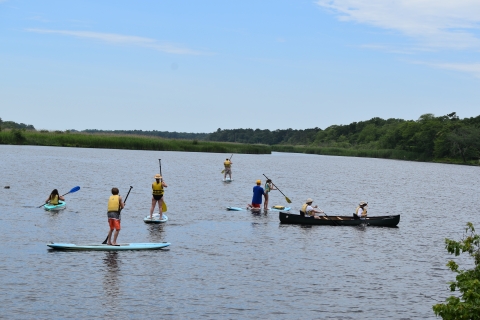Facility Activities
Wertheim offers more than six miles of hiking trails and some of the best paddling on Long Island. Visitors can also enjoy wildlife viewing, nature photography, fishing, environmental education, nature interpretation, and cross-country skiing on the refuge. Waterfowl numbers peak in the winter, while bird watching during the spring and fall migrations allows you to view a variety of birds including raptors, waterfowl and songbirds. The spring bloom decorates the refuge with colorful flowers such as irises, marsh buttercups and violets. Autumn colors are equally splendid! The Visitor Center showcases Long Island ecosystems, wildlife viewing, and other recreational opportunities. An information kiosk, wildlife observation blinds and public restrooms are provided along the trails for your convenience.




